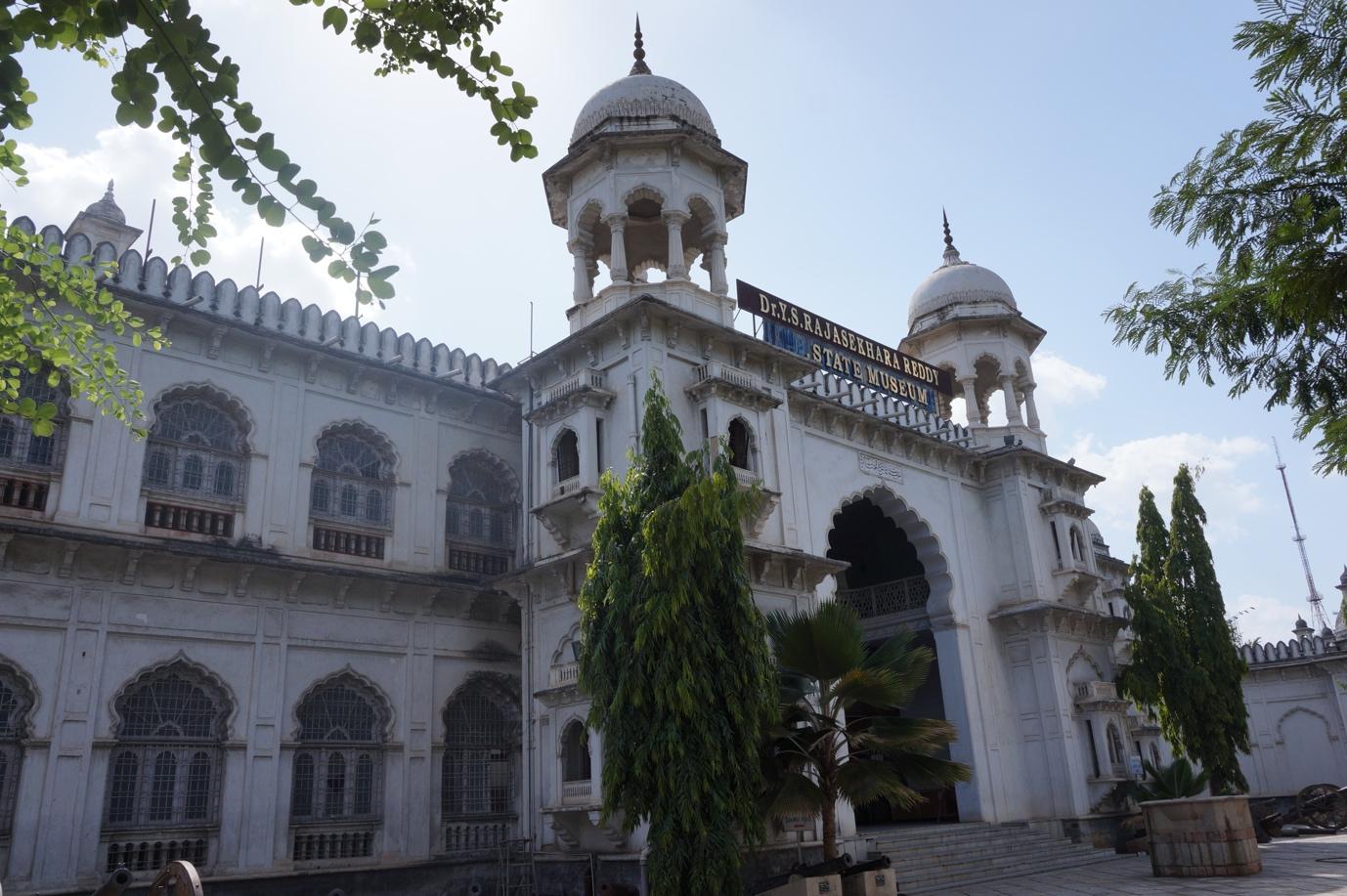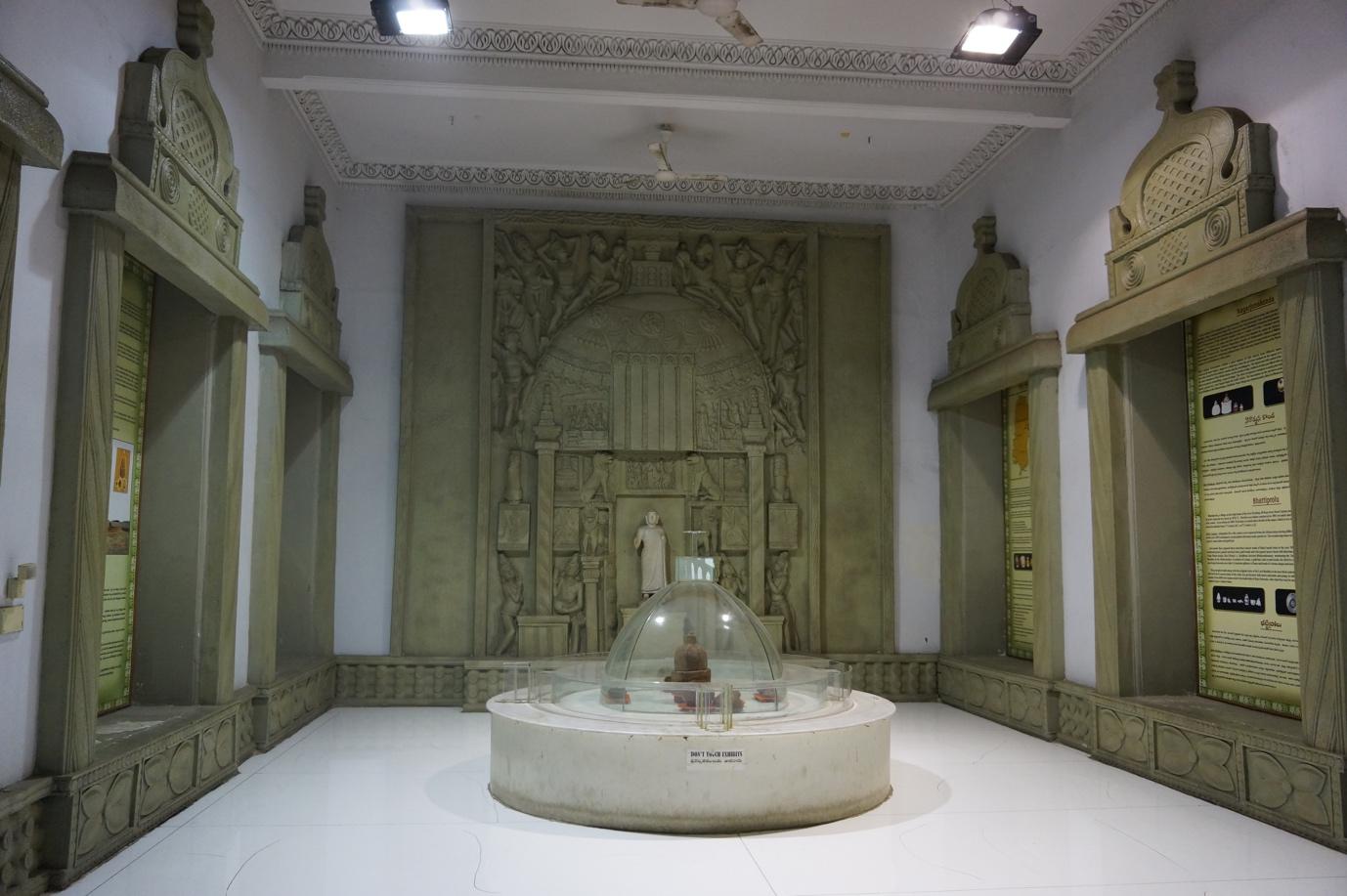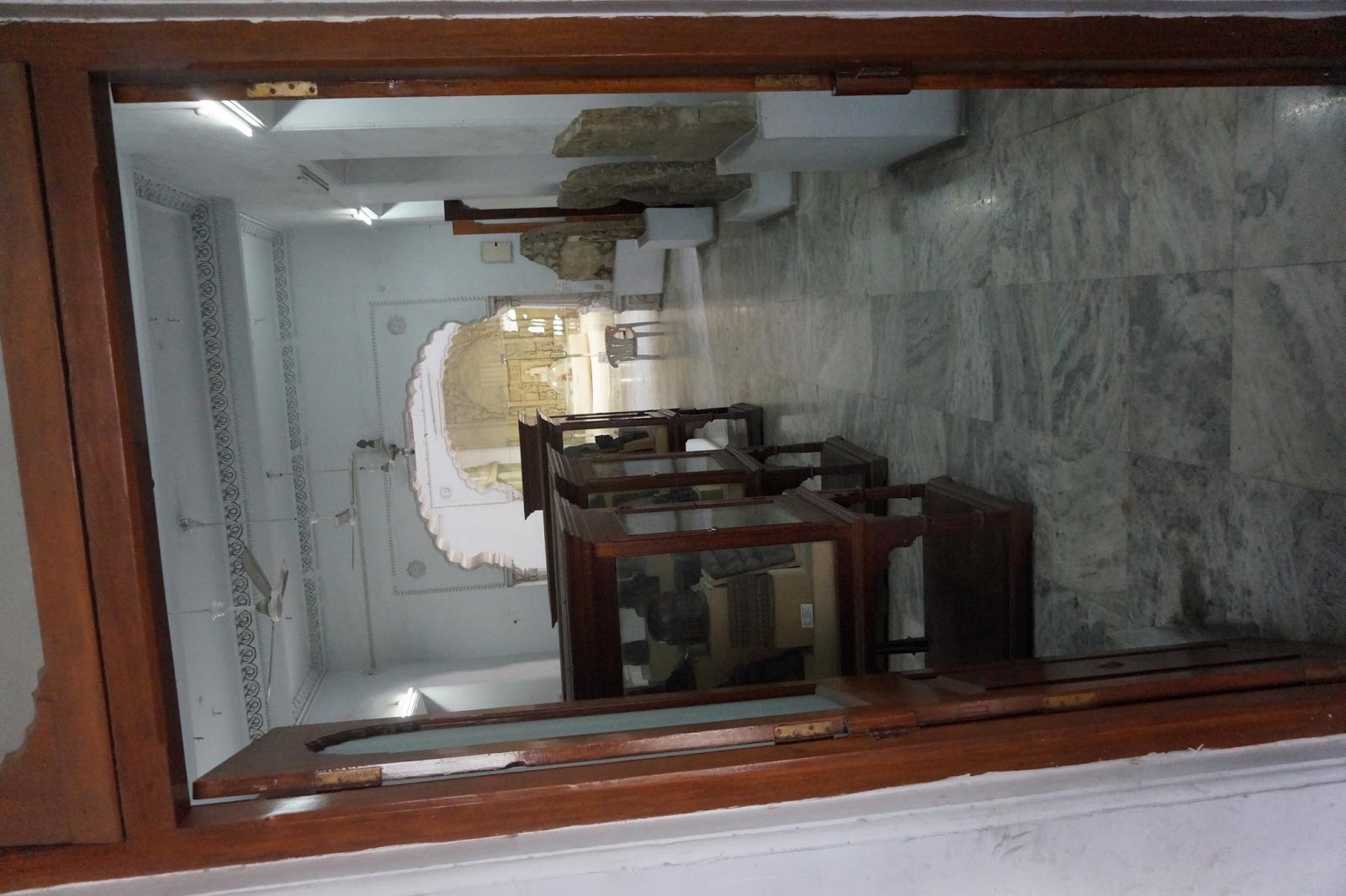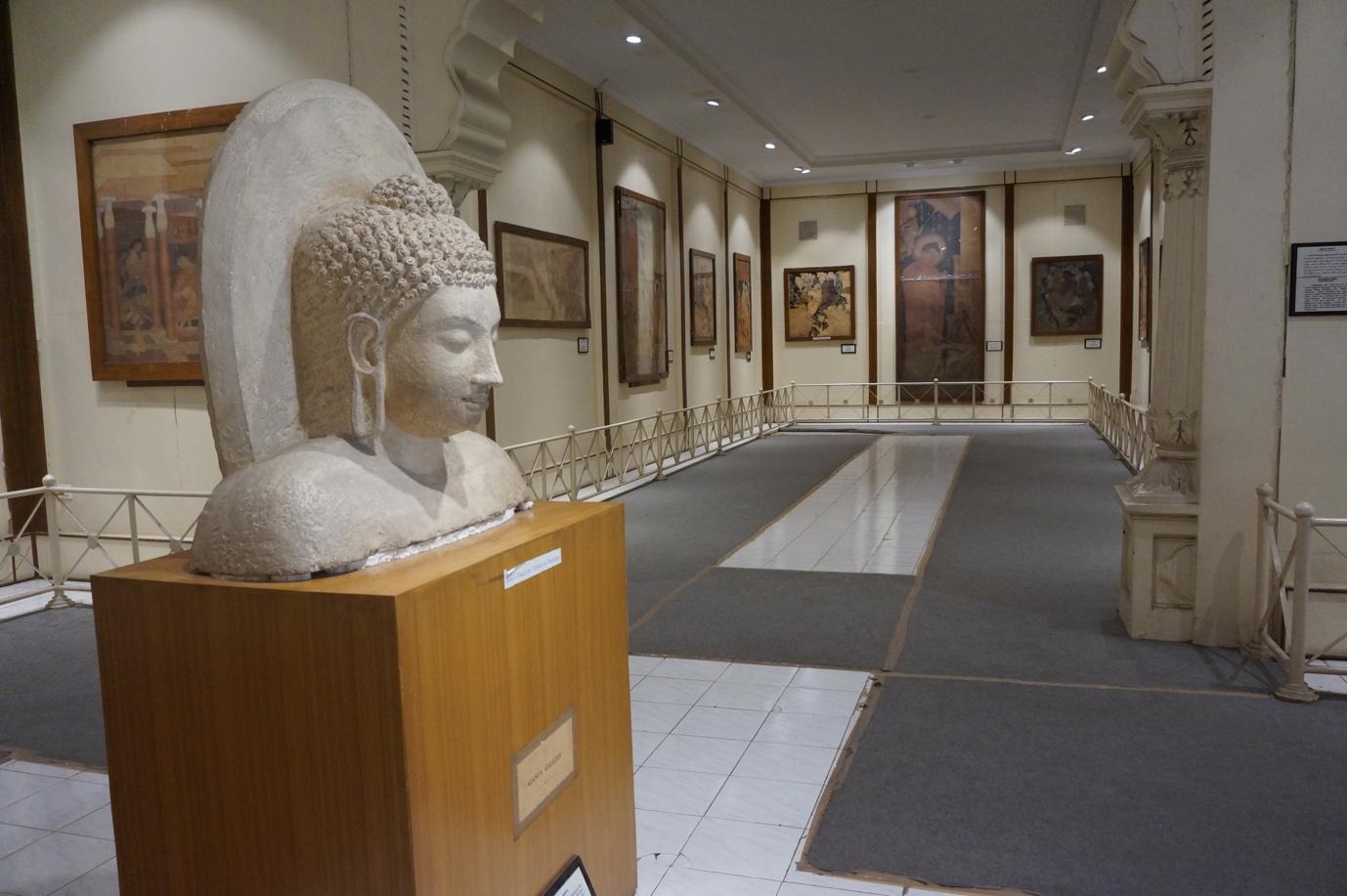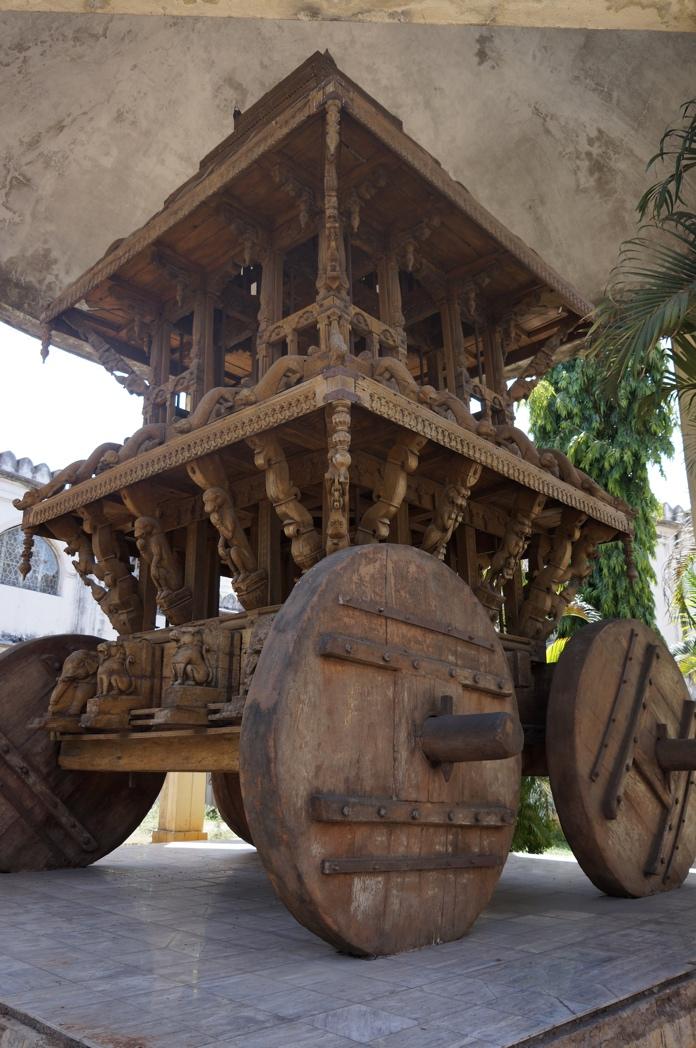Museum Address
5-10-193, I Floor, HACA Bhavan, Public Garden Road, near Control Room, Hyderabad, Telangana 500004
Are there any docents or guides who visitors can directly call to book for a guided tour?
No
When was the museum established?
1931
Briefly describe the history of the museum, its collection and donors.
Institutional History:
Archaeologist Henry Cousens was the first person to excavate sites in the territory of Hyderabad in the nineteenth century, under the supervision of the nizam of Hyderabad. In the 1920s, the excavated items were placed in a museum built on an ancient site by Mir Osman Ali Khan. The museum was formally inaugurated in 1931. The nizam contributed his personal collection of art objects for display along with all the antiquities recovered from his dominion. The Hyderabad Museum was subsequently renamed the State Museum under the Department of Heritage, Telangana.
(Reference: https://heritage.telangana.gov.in/museums/state-museum-hyderabad/)
Collection:
The museum showcases Hindu, Jain and Buddhist sculptures and bronzes, decorative art objects and paintings (copies of Ajanta, Chughtai, miniature and modern artworks). The museum includes a number of impressive exhibits—an Egyptian mummy, Buddhist and Jain relics, the Buddhist Gallery, coins from the Satavahana period, the Brahmanical and Jain Gallery, the Arms and Armour Gallery, the Numismatics Gallery, the Ajanta Gallery, bronze figures from the Vijayanagara and Chola periods, Roman-era coins, etc.—and offers a visually delightful experience for visitors.
The collection is spread across two floors of the heritage building, two floors of semi-circular galleries, a separate contemporary-art pavilion building and an annexe building located behind the main museum. The Sculpture Garden Gallery displays 93 sculptures and architectural items dating from the Satavahana period (second century BC) to the post-Vijayanagara period (seventeenth century AD) in different stone media. In the garden, two four-pillar mandapas belonging to the Kakatiya and Vijayanagara eras, a number of veergals (hero stones), panchalohas, iron cannons and a wooden chariot have been displayed. The museum shop and its counter are located in the entrance complex.
(Reference: https://heritage.telangana.gov.in/museums/state-museum-hyderabad/)
Specific artefacts that one must see and why:
- The mummified body of Princess Naishu. Only five other museums in India—located in Mumbai, Kolkata, Jaipur, Baroda and Lucknow—possess and exhibit an Egyptian mummy. Thus, this is a rare sight to see. (https://www.thehindu.com/news/cities/Hyderabad/a-mummy-gets-a-new-life-sans-oxygen/article19280932.ece)
- Relics of Buddha unearthed in Bavikonda, in Visakhapatnam. The Bavikonda relics are considered unique and religiously significant, unlike the corporal remains of the Buddha recovered at 17 other relic sites (out of 155 Buddhist centres in the state, including Amaravathi, Bhattiprolu and Nagarjunakonda). It was the first time in the history of excavations in the state that archaeologists stumbled upon five caskets at a single site. (Reference: https://www.thehindu.com/2005/12/31/stories/2005123118050500.htm)
- The Quran Sharifs, calligraphed under Aurangzeb and Dara Shikoh, in the Islamic Arts Gallery. They provide a window into the Islamic art of Urdu calligraphy, which is rarely displayed in museums.
Notable donors to the museum include Mir Osman Ali Khan, who donated his personal artefacts and the Egyptian mummy.
Library and archives services
No
IT facilities ( Photocopying, printing, computer )
No
Conference/ Seminar hall
No
Who manages the museum?
ASI
Person-in-charge of the museum
Director
What is the average duration to see the museum?
1-2 hours
Map your museum’s correct location on the map given below.
Is the museum currently closed?
No
Image for museum exterior/building
Gallery Images
Image title
Entrance to the heritage building
Image title
A view of the rear entrance from the road near the metro station
Image title
Pathway to the annexe building. This is located towards the rear of the museum and houses paintings and sculptures. It is the least-visited part of the museum as there are no signboards in the main or heritage building that indicate its existence
Image title
The gallery that houses that famous Egyptian mummy
Image title
Display tables in the Inscriptions Gallery
Image title
Holy Buddhist Relics Gallery – the walls contain information on Buddhist sites around Andhra Pradesh and Telangana
Image title
The Buddhist Sculpture Gallery overlooking the Holy Buddhist Relics Gallery
Image title
Ajanta Frescos Gallery
Image title
The mummified body of Princess Naishu
Image title
Statues from Andhra in the Bronze Gallery
Image title
Chinese porcelain and blue-and-white porcelain artefacts in the Decorative Arts Gallery
Image title
A wooden chariot from the Vijayanagara period found in Mehboobnagar, which is now displayed on the lawns of the museum
Image title
An original copy of the Ajanta fresco based on a scene from the Simhalavadana, a story from the Jataka Tales, in the Ajanta Fresco Gallery
Image title
A nineteenth-century cannon mounted on wheels, displayed in the Cannon Gallery
Image title
The Quran Sharif illuminated with the seal of Aurangzeb, displayed in the Islamic Arts Gallery
Image title
'Salma', a painting by artist A.R. Chughtai, exhibited in the Chughtai Gallery
Image title
A mandapam from the Vijayanagara period (twelfth to sixteenth centuries), from the Mehboobnagar district (from a village that was submerged during the Srisailam Reservoir project), which is now displayed on the lawns of the museum
Image title
Buddhist statues in the Bronze Gallery with explanations given on the boards
Entry fee information
Adults – Rs 10; Children – Rs 5
Opening Days
Sunday
Monday
Tuesday
Wednesday
Thursday
Saturday
The best time of the day to visit the museum?
The museum is never crowded. It hosts a handful of tourists on the weekends.
Interesting things about the Museum
Throughout the museum, boards describing the artefacts and their history have been displayed, which give additional insights into the collection.
Most uninteresting aspect of the museum
Some sections were under renovation. Some artefacts (especially in the Stone Sculpture Gallery) need to be arranged more spaciously.
a. Helpfulness (guides, guards, curator, director)
Average
Name of Museum Surveyor
Vandana Rao


